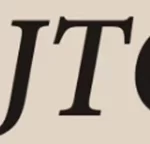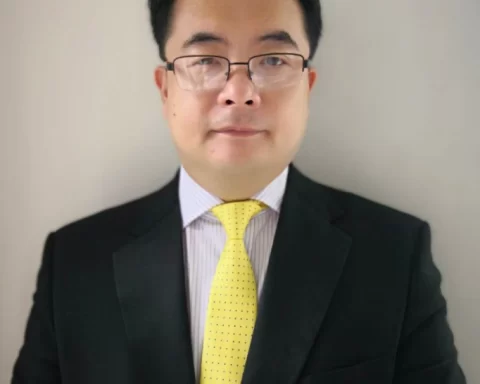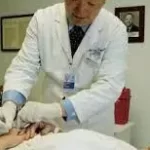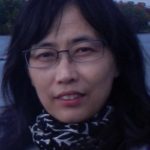Yonggang Han
Abstract: At the end of 2022, the number of COVID-19 positive patients increased significantly after cautionary measures were relaxed. The combination of the classic TCM texts Shanghan Zabing Lun [On Cold Damage and Miscellaneous Diseases] and Fu Xing Jue [Extraneous Secrets] with the theory of 5 movements and 6 qi provides powerful guidance in the prevention and treatment of epidemics. According to the minor method of 5 movements and 6 qi, it is recommended to use Major Spleen-Supplementing Decoction (dà bǔ pí tāng) and Major Spleen-Supplementing Acupuncture (dà bǔ pí zhēn) from Fu Xing Jue as a preventive method. According to the intermediate and major methods of 5 movements and 6 qi, it is recommended to use Cinnamon Twig Decoction (guì zhī tāng) from Shanghan Lun [On Cold Damage] or Minor Yang Dawn Decoction (xiǎo yáng dàn tāng) from Fu Xing Jue as a preventive prescription. In addition, it is recommended to use food therapy for prevention, such as hot-and-sour soup and ginger-and-scallion soup. For patients with fever, the recommended prescription is Major Yin Dawn Decoction (dà yīn dàn tāng) from Fu Xing Jue, which is the same as Minor Bupleurum Decoction (xiǎo chái hú tāng) from Shanghan Lun plus red peony root (chì sháo).
Keywords:COVID-19; Shanghan Lun; Fu Xing Jue; five movements and six qi.
The COVID-19 Epidemic in Late 2022
In late 2022, cautionary measures against COVID-19 were gradually relaxed in mainland China. According to a report from Xinhua News on December 2nd, Beijing’s Chaoyang District announced that restrictions would be removed from 363 high-risk zones that met the necessary criteria. Guangzhou and Kunming also released announcements that removed temporary restrictions in some areas. However, after these restrictions were lifted, the number of COVID-19 positive patients increased dramatically. On December 12th, Beijing’s 431st COVID-19 Epidemic Prevention Press Conference reported that on the 11th, there were over 22,000 patient visits to fever clinics in Beijing and the number of fever clinic patients was 16 times that of the previous week. On December 19th, China News Service reported that Beijing was adjusting its medical resources in a timely manner based on current trends and was working quickly to open more fever clinics. The total number of fever clinics increased rapidly from 94 to 1263 locations.
The author of this paper is based in London, United Kingdom. According to a December 15th report by the UK Health Security Agency (UKHSA), there were a total of 74 deaths caused by streptococcal infection across all age groups in the UK from September 12th to December 11th, including 19 children.
Shanghan Zabing Lun and Fu Xing Jue
Shanghan Zabing Lun[On Cold Damage and Miscellaneous Diseases]was written by late Eastern Han dynasty master, Zhang Zhongjing. Many years after its compilation, it was divided into 2 parts, Shanghan Lun [On Cold Damage]and Jingui Yaolüe [Essential Prescriptions from the Golden Coffer]. In terms of diagnosis and treatment, Shanghan Lun uses the 6 channels to diagnose cold damage, while the Jingui Yaolüe uses the viscera and bowels to diagnose miscellaneous diseases.
Southern Qi and Liang dynasty TCM master Tao Hongjing’s famous work Fu Xing Jue [Extraneous Secrets] also includes 2 main parts, “Bowel and Viscera Supplementation and Drainage Prescriptions” and “2 Dawns and 4 Spirits Prescriptions”. “Bowel and Viscera Supplementation and Drainage Prescriptions” uses the 5 elements to diagnose miscellaneous diseases. Based on the core 5 elements, diseases are diagnosed using the viscera instead of the bowels. This part does not clearly distinguish the viscera from the bowels, but rather uses the former in place of the latter, treating the bowels without mentioning them. “Two Dawns and 4 Spirits Prescriptions” uses the 6 directions to diagnose epidemics and plagues; the 6 directions are used to diagnose and treat highly contagious epidemic and plague diseases caused by abnormal qi of heaven and earth. In using the 5 elements to diagnose miscellaneous diseases, the number 5 corresponds to the 5 movements, the 5 elements, and the 5 viscera. In using the 6 directions to diagnose epidemics and plagues, the number 6 corresponds to the 6 directions, the 6 qi, and the 6 channels. This fully embodies the classical TCM system of Daoist practice, in which “the number belonging to heaven is 5 and that belonging to earth is 6” and “the number belonging to heaven is 6 and that belonging to earth is 5”. In this system, the Dao [way] serves as a basis for practice, as the one principle unifying everything.
Analysis of Prevention and Treatment Based on the Theory of Five Movements and Six Qi
According to the TCM theory of 5 movements and 6 qi, there are 7 main movement and qi factors: major movement, host movement, guest movement, host qi, guest qi, celestial manager [or celestial controlling], and at-the-spring [or terrestrial controlling]. The minor, intermediate, and major movement and qi methods can be used to prevent and treat virulent contagious diseases.
This paper was written on December 19th, 2022 in the Gregorian calendar. In the Chinese calendar, this is the 26th day of the winter month in the Yang Water (rén yín) Year of the Tiger, in the solar term of Heavy Snow (21st solar term), just before the winter solstice.
(1) The Minor Movement and Qi Method
Chapter 69 of the Huangdi Neijing Su Wen [Yellow Emperor’s Classic of Internal Medicine: Elementary Questions], entitled “On the Major Theory of Qi Interchange and Transformation”, states: “If in a given year, the wood element is in excess, the wind qi will flow and spread, and spleen earth will be invaded. The people will become ill with indigestion, diarrhea, loss of appetite, heavy limbs, vexation, repressed negative emotions, borborygmus, and propping abdominal fullness. This is in response to the strong influence of Jupiter. In extreme cases, there may be sudden anger, dizziness, vertigo, and diseases of the head. The transformation qi [of earth] does not govern properly; the vital qi [of wood] rules alone. Clouds fly through the air, and plants and trees are unsettled, and may even shake and fall. People may have rib-side pain and severe vomiting. Those whose Chongyang [ST-42] pulse expires are untreatable and will die. This is in response to the strong influence of Venus.”
Jupiter is the wood planet, while Venus is the metal planet. In the 2022, the Yang Water (rén yín) Year of the Tiger, wood is excess in the major movement. The functions of the wood element systems of the liver and gallbladder are excessively effulgent and exuberant, thereby causing illness. Wood exploits earth; the earth element systems of the spleen and stomach are oppressed by the wood qi 〖JP2〗and are most deeply injured by it. Therefore, using the minor movement and qi method, which only takes into account the single movement and qi factor of the major movement (the year movement), the optimal movement and qi prescription for this year is the Major Spleen-Supplementing Decoction (dà bǔ pí tāng) from Fu Xing Jue.
The full manuscript of Fu Xing Jue Wuzang Yongyao Fayao [Extraneous Secrets: Essential Methods of Using Herbal Medicine to Treat the Five Viscera] states: “Major Spleen-Supplementing Decoction or Powder (dà bǔ pí tāng sǎn) treats abdominal distention and swelling, inability to transform food and drink, and occasional spontaneous vomiting and diarrhea. These patients are desiccated and thin like twigs, and when standing they cannot move or turn. They have dryness, thirst, sweating, and hasty breathing. The pulse is faint and, at times, bound. The prescription consists of 3 liang* each of ginseng (rén shēn), mix-fried licorice (gān cǎo, zhì), dried ginger (gān jiāng), and ophiopogon (mài mén dōng), and 1 liang each of ovate atractylodes (bái zhú), schisandra (wǔ wèi zǐ), and inula flower (xuán fù huā). Gather these 7 ingredients and add 1 dou* of water. Boil until the volume of water is reduced to 4 sheng*. While the decoction is warm, take 1 sheng. Take 3 times during the day and 1 time at night.”
Major Spleen-Supplementing Decoction (dà bǔ pí tāng) cultivates earth so that it can engender metal, supplementing the element and its child at the same time; it supplements spleen earth and lung metal simultaneously. Supplementing spleen earth can prevent and treat injury to the spleen earth caused by excessive wood, so it is a defensive tactic. Because metal restrains wood, supplementing lung metal is a counterattack against wood, so this can reduce the excessive wood qi. Major Spleen-Supplementing Decoction (dà bǔ pí tāng) is a movement and qi prescription designed for year movements with excess wood using a mix of defensive and offensive tactics. Clinically, one could also use a combination of Minor Spleen-Supplementing Decoction (xiǎo bǔ pí tāng) and Minor Lung-Supplementing Decoction (xiǎo bǔ fèi tāng). The preventive effect of this prescription is more reliable than a vaccine; it can greatly strengthen the human body’s resistance, thereby preventing invasion by pathogenic microorganisms
Aside from Chinese herbal medicine, one can use Major Spleen-Supplementing Acupuncture (dà bǔ pí zhēn) from the“Fu Xing Jue Viscera and Bowel Supplementation and Drainage Acupuncture Technique” that the author of this paper has explored and summarized. Points to be supplemented are Taibai [SP-3], Dadu [SP-2], Jingqu [LU-8], and Taiyuan [LU-9]. Points to be drained are Ququan [LV-8], Taixi [KD-3], and Zhongchong [PC-9].
(2)The Intermediate and Major Movement and Qi Methods
In the intermediate movement and qi method, one must take 2 to 3 movement and qi factors into account. In the major movement and qi method, one must take 5 to 7 of these factors into account.
In 2022, the Yang Water (rén yín) Year of the Tiger, there is excess wood in the major movement. In the latter half of the year, jue yin [reverting yin] wind wood is at-the-spring [or terrestrial controlling], so wood from the 5 movements and wind from the 6 qi are the determining factors that must be prioritized. Finally, shrinking the time frame down to the time of writing, the northern hemisphere is currently in the fifth movement, with both host and guest movements in tai yang [greater yang] cold water. It is in the sixth qi, with the host qi of tai yang cold water and guest qi of jue yin wind wood. Among the 7 movement and qi factors, 3 are cold water and 3 are wind wood. The larger environment consisting of the 2 qi of heaven and earth is wind cold; among the 6 excesses [or kinds of weather], the main disease-causing factors are wind and cold. Therefore, the major method for prevention and treatment is to dispel wind and dissipate cold. In terms of prevention, the author primarily recommends Cinnamon Twig Decoction (guì zhī tāng) from Shanghan Lun. The name of this prescription in Fu Xing Jue is Minor Yang Dawn Decoction (xiǎo yáng dàn tāng).
The chapter of Shanghan Lun entitled “Diagnosing Tai Yang Disease Pulse and Symptoms with Treatment Methods” states, “In tai yang [greater yang] wind strike, yang is floating and yin is weak; those with floating yang have spontaneous heat effusion and those with weak yin have spontaneous sweating. If there is shivering with aversion to cold, aversion to wind and drafts, mild heat effusion, noisy breathing, and dry retching, Cinnamon Twig Decoction (guì zhī tāng) governs. Cinnamon Twig Decoction (guì zhī tāng) prescription: cinnamon twig (guì zhī), 3 liang, bark removed, acrid and hot; peony root (sháo yào), 3 liang, bitter and sour, slightly cold; licorice (gān cǎo), 2 liang, mix-fried, sweet and neutral; fresh ginger (shēng jiāng), 3 liang, sliced, acrid and warm; and jujube (dà zǎo), 12 pieces, split, sweet and warm. Gather these 5 ingredients and crush them, then add 7 sheng of water. Boil on low heat until the volume of water is reduced to 3 sheng. Strain the decoction and wait for it to reach a suitable temperature, then take 1 sheng. After taking the decoction, drink more than 1 sheng of hot diluted porridge to strengthen the effect of the herbs. Cover up and keep warm for about 1 hour. If the whole body becomes slightly moist with sweat, this is a good sign. One must not cause the patient to be dripping wet or else the disease will not be eliminated.”
The full manuscript of Fu Xing Jue Wuzang Yongyao Fayao states, “Minor Yang Dawn Decoction (xiǎo yáng dàn tāng) treats contagious heat effusion, spontaneous sweating with aversion to wind, noisy breathing, and dry retching. It consists of 3 liang of cinnamon twig (guì zhī), 3 liang of peony root (sháo yào), 2 liang of sliced fresh ginger (shēng jiāng), 2 liang of mix-fried licorice (gān cǎo, zhì), and 12 pieces of jujube (dà zǎo). Gather these 5 ingredients and add 7 sheng of water. Boil until the volume of water is reduced to 3 sheng. While the decoction is warm, take 1 sheng. After taking it, immediately drink 1 vessel of hot rice porridge to strengthen the effect of the herbs. One should cause slight sweating, but the patient must not sweat heavily as if dripping wet. If there is such sweating, the disease will not be eliminated. If there is no sweating, continue to take the decoction and stop upon recovery. Take it 3 times daily. If 1 sheng of malt sugar (yí táng) is added, this becomes Upright Yang Dawn Decoction (zhèng yáng dàn tāng).”
During the COVID-19 epidemic, many Chinese medicinals dramatically increased in price, and some were not even available at all. In light of this, the author of this paper suggests 2 food therapy prescriptions for prevention: hot-and-sour soup and ginger-scallion soup. Food and medicine come from the same source, therefore, the same medical principles also apply here.
In terms of treating patients with heat effusion after contracting the virus, from the movement and qi perspective, the author primarily recommends Major Yin Dawn Decoction (dà yīn dàn tāng) from Fu Xing Jue, which is equivalent to Minor Bupleurum Decoction (xiǎo chái hú tāng) from Shanghan Lun plus peony root (sháo yào). For peony root (sháo yào) in this prescription, the author suggests using red peony root (chì sháo).
The chapter of Shanghan Lun entitled “Diagnosing Tai Yang Disease Pulse and Symptoms with Treatment Methods” states, “After 5 or 6 days of cold damage with wind strike, if there is alternating heat effusion and aversion to cold, fullness in the chest and rib-side, silence with no desire to eat or drink, heart vexation, desire to vomit, or vexation in the chest without vomiting, or thirst, or abdominal pain, or hard glomus under the rib-side, or palpitations below the heart with urinary difficulty, or lack of thirst with slight body heat, or cough, then Minor Bupleurum Decoction (xiǎo chái hú tāng) governs. Minor Bupleurum Decoction (xiǎo chái hú tāng) prescription: bupleurum (chái hú), ? jin*, bitter and slightly cold; scutellaria (huáng qín), 3 liang, bitter and cold; ginseng (rén shēn), 3 liang, sweet and warm; licorice (gān cǎo), 3 liang, sweet and neutral; pinellia (bàn xià), ? sheng, washed, acrid and warm; fresh ginger (shēng jiāng), 3 liang, sliced, acrid and warm; and jujube (dà zǎo), 13 pieces, split, sweet and warm.”
Fu Xing Jue states, “Major Yin Dawn Decoction (dà yīn dàn tāng) treats all diseases of the head and eyes with vertigo and dizziness, dryness in the throat, desire to dry-retch, inability to keep food down, vexation and fullness in the heart, chest and rib-side propping pain, and alternating aversion to cold and heat effusion. It consists of 8 liang of bupleurum (chái hú); 3 liang each of ginseng (rén shēn), scutellaria (huáng qín), and sliced fresh ginger (shēng jiāng); 2 liang of licorice (gān cǎo), mix-fried; 4 liang of peony root (sháo yào); 12 pieces of jujube (dà zǎo); and 1 sheng of pinellia (bàn xià), washed. Gather these 8 ingredients, and add 1 dou 2 sheng of water. Boil until the water is reduced to 6 sheng, strain the decoction, and continue cooking, slowly simmering it until it is reduced to 3 sheng. While the decoction is warm, take 1 sheng. Take it 3 times daily.”
The aforementioned recommendations can be used until the Start of Spring (1st solar term) on February 4th, 2023.
Note: It is currently summer in the southern hemisphere; the solar term is Grain in Ear (9th solar term) and the summer solstice is approaching. Therefore, the aforementioned recommendations based on the intermediate and major movement and qi methods are not applicable to people in Australia and New Zealand.
The starting point for a movement and qi prescription is the group; it is targeted to an entire population in a specific time and place, with “1 prescription for 10,000 people” that can be applied to the majority of cases. Another feature of TCM is that it is an individualized medicine that relies on pattern diagnosis and a model of’1 prescription for 1 person. By combining the individualized examination procedures of inspection, listening and smelling, asking, and palpation with general movement and qi calculations, this close integration of generalization and individualization can significantly improve the preventive and therapeutic effects of TCM treatment.
*Translator’s Note: The terms “liang”, “jin”, “dou”, and “sheng” are traditional Chinese units of weight or volume. The historical definition of these units has varied over time, so no conversions have been provided here. Interested readers may consult page 719 of A Practical Dictionary of Chinese Medicine (Second Edition, Second Printing) by Nigel Wiseman and Feng Ye.
About the Author:
Han Yonggang earned his doctoral degree from the Institute of Basic Research in Clinical Medicine at the China Academy of Chinese Medical Sciences. He studied under Wang Yongyan, a member of the Chinese Academy of Engineering, and Professor Gao Sihua, former president of Beijing University of Chinese Medicine. He has worked in the UK since 2009, where he is currently employed at Chelsea Natural Health Clinic and the London Academy of Chinese Acupuncture. He is a member of the World Classic Chinese Medicine Association Expert Committee, a standing member of the World Federation of Chinese Medical Societies Expert Committee on Prescription-Dose Effects, and a council member of the World Federation of Chinese Medicine Yunqi Societies.
運氣學說對2022年末疫情的預防和治療分析
韓永剛
摘要: 2022年末,疫情解封之後,新冠病毒陽性患者大幅度增加,發熱門診量倍增。《傷寒雜病論》和《輔行訣》是中醫的經典著作,結合五運六氣學說,對疫情的預防和治療有很強的指導意義。根據小運氣法,建議使用《輔行訣》大補脾湯和大補脾針作為預防手段。根據中運氣法和大運氣法,建議使用《傷寒論》桂枝湯也就是《輔行訣》小陽旦湯作為預防處方;並且建議食療處方用於預防,酸辣湯和生薑蔥白湯。對於發熱患者,建議的治療主方是《輔行訣》大陰旦湯,也就是《傷寒論》小柴胡湯加芍藥。
關鍵詞: 新冠狀病毒病;傷寒論;輔行訣;五運六氣。
2022年末的疫情
2022年末,中國大陸地區逐步實施疫情解封。根據12月2日新華社消息,北京市朝陽區宣佈陸續解封符合條件的高風險區域363個,廣州、昆明等地也發佈了解除一些地方臨時管控區的公告。但是解封之後,新冠病毒陽性患者呈現大幅度增加的情況。根據12月12日,北京市第431場新冠肺炎疫情防控工作新聞發佈會的信息,北京11日發熱門診接診2.2萬人次,發熱門診患者為一週前的16倍。中新網北京12月19日電,北京因時因勢及時動態調整醫療資源,快速增設發熱門診,發熱門診總數由94家迅速增加至1263家。
筆者身在英國倫敦,根據英國衛生保障局 (UKHSA)12月15日公佈的資料,9月12日至12月11日,英國各年齡階段的鏈球菌感染累計死亡病例達74例,其中包括兒童19人。
《傷寒雜病論》和《輔行訣》
東漢末年醫聖張仲景的著作《傷寒雜病論》在成書多年之後分為了兩部分,《傷寒論》和《金匱要略》 。從辨證論治的角度來看,《傷寒論》是以“六經辨傷寒”,《金匱要略》是以“臟腑辨雜病”。
南朝齊梁時期的中醫天才陶弘景的著作《輔行訣》,也主要包括兩大部分,“臟腑補瀉方”和“二旦四神方”。臟腑補瀉方是以“五行辨雜病”,即以五行為核心,以臟代腑辨雜病,這一部分不明確區分臟腑,而是以臟代腑,不言腑而治腑。二旦四神方是以“六合辨疫癘”,即用六合辨證應對天地異氣導致的具有強烈傳染性的疫病、癘病。五行辨雜病,其數五,以應五運、五行、五臟;六合辨疫癘,其數六,以應六合、六氣、六經;完整地體現了經典中醫“天五、地六”和“天六、地五”的道術體系,由道而術,一以貫之。
基於五運六氣學說的預防和治療分析
根據中醫五運六氣學說,運氣7要素包括大運、主運、客運、主氣、客氣、司天、在泉。可以分別使用小運氣法、中運氣法和大運氣法來預防和治療烈性傳染病。
本文撰寫於西曆2022年12月19日,農曆壬寅虎年冬月二十六,大雪節氣,即將冬至。

(一)小運氣法
《黃帝內經·素問·氣交變大論》:“歲木太過,風氣流行,脾土受邪。民病飱泄食減,體重煩冤,腸鳴腹支滿,上應歲星。甚則忽忽善怒,眩冒巔疾,化氣不政,生氣獨治,雲物飛動,草木不寧,甚而搖落,反脇痛而吐甚,沖陽絕者,死不治,上應太白星。”
歲星是木星,太白星是金星。2022壬寅虎年,大運木太過。肝膽木系統的功能過於旺盛為病,木乘土,脾胃土系統受到木氣的抑制,受傷害最深。因此,使用小運氣法,僅僅考慮大運(歲運),單一運氣要素,今年的最佳的運氣處方是《輔行訣》大補脾湯。
《輔行訣五臟用藥法要》整訂稿:“大補脾湯散:治腹脹大,飲食不化,時自吐利,其人枯瘦如柴,立不可動轉,乾渴,汗出,氣急,脈微而時結者方。人蔘,甘草,炙;乾薑,麥門冬,各三兩;白朮、五味子、旋覆花各一兩。右七味,以水一斗,煮取四升,溫服一升,日三夜一服。”
大補脾湯培土生金,本子同補,脾土和肺金同補。補脾土,可以預防和治療木太過對於脾土的傷害,屬於防守;補肺金,金克木,對木進行反擊,則可以減輕木太過之氣。大補脾湯就是針對歲運木太過的運氣處方,融防守和反擊於一體。臨床也可以採用小補脾湯與小補肺湯合方。本方的預防效果比打疫苗要可靠得多,能夠大幅度增強人體的抵抗力,從而避免病原微生物的侵襲。
中藥之外,還可以採用筆者發掘整理的“輔行訣臟腑補瀉針法”的大補脾針:太白、大都、經渠、太淵,補法;曲泉、太溪、中沖,瀉法。
(二)中運氣法和大運氣法
中運氣法,要考慮2至3個運氣要素。大運氣法,要考慮5至7個運氣要素。
2022壬寅虎年,大運木太過,下半年厥陰風木在泉,五運之木和六氣之風是決定因素,必須高度重視。最後將時間範圍縮小至目前,北半球目前是第五運,主運和客運都是太陽寒水;第六氣,主氣太陽寒水,客氣厥陰風木。運氣7要素,有3個要素是寒水,有3個要素是風木,天地二氣的大環境是風寒,六淫中的風和寒是最主要的致病因素。因此,祛風散寒是防治大法。就預防而言,筆者首先建議的是《傷寒論》桂枝湯,本方在《輔行訣》中的名稱是小陽旦湯。
《傷寒論·辨太陽病脈證並治法》“太陽中風,陽浮而陰弱,陽浮者熱自發,陰弱者汗自出,嗇嗇惡寒,淅淅惡風,翕翕發熱,鼻鳴乾嘔者,桂枝湯主之。桂枝湯方:桂枝三兩,去皮,味辛熱;芍藥三兩,味苦酸,微寒;甘草二兩,炙,味甘平;生薑三兩,切,味辛溫;大棗十二枚,擘,味甘溫。右伍味,㕮咀,以水柒升,微火煮取三升,去滓,適寒溫,服壹升。服已須臾,歠熱稀粥壹升餘,以助藥力。溫覆令壹時許,遍身漐漐微似有汗者益佳,不可令如水流漓,病必不除。”
《輔行訣五臟用藥法要》整訂稿:“小陽旦湯:治天行發熱,自汗出而惡風,鼻鳴乾嘔者方。桂枝三兩,芍藥三兩,生薑二兩,切,甘草二兩,炙,大棗十二枚。右五味,以水七升,煮取三升,溫服一升。服已,即啜熱粥飯一器,以助藥力。稍令汗出,不可大汗流漓,汗之則病不除也。若不汗出可隨服之,取瘥止。日三服。若加飴一升,為正陽旦湯也。”
疫情期間,很多中藥的價格暴漲,並且有價無市。有鑒於此,筆者建議兩款食療處方用於預防,酸辣湯和生薑蔥白湯。藥食同源,醫理相通。
就治療而言,對於感染病毒後的發熱患者,從運氣角度,筆者首先建議的是《輔行訣》大陰旦湯,等同於《傷寒論》小柴胡湯加芍藥。本方中的芍藥,筆者建議用赤芍藥。
《傷寒論·辨太陽病脈證並治》“傷寒五六日,中風,往來寒熱,胸脅苦滿,默默不欲飲食,心煩喜嘔,或胸中煩而不嘔,或渴,或腹中痛,或脅下痞硬,或心下悸,小便不利,或不渴,身有微熱,或咳者,與小柴胡湯主之。小柴胡湯方:柴胡半斤,味苦,微寒;黃芩三兩,味苦寒;人蔘三兩,味甘溫;甘草三兩,味甘平;半夏半升,洗,味辛溫;生薑三兩,切,味辛溫;大棗十三枚,擘,味甘溫。”
《輔行訣》“大陰旦湯:治凡病頭目眩暈,咽中乾,喜乾嘔,食不下,心中煩滿,胸脅支痛,往來寒熱者方。柴胡八兩,人蔘、黃芩、生薑切,各三兩;甘草二兩,炙;芍藥四兩,大棗十二枚,半夏一升,洗。右八味,以水一斗二升,煮取六升,去滓,重上火,緩緩煎之,取得三升,溫服一升,日三服。”
以上建議可以執行到立春節氣,2023年2月4日。
注意:目前南半球是夏季,節氣是芒種,即將夏至。因此以上建議,中運氣法和大運氣法不適合在澳大利亞和新西蘭的人群。
運氣處方的出發點是群體,是針對特定時空下的整體人群,“萬人一方”,可以適用於大部分人。中醫的另外的一個特點是個體化醫療,辨證論治,“一人一方”。如果能夠將個體化的望聞問切,結合整體化的運氣推算,整體化和個體化緊密結合,中醫的預防和治療效果將大大提升。
*譯者注:本文中“兩”、“斤”、“斗”、“升”等詞彙,屬於中國傳統重量和容量單位,其歷史定義因時而異,故本文中未予以換算。讀者可自行查閱《實用英文中醫辭典》(Nigel Wiseman、馮曄著)第719頁
作者簡介:
韓永剛,中國中醫科學院臨床醫學基礎研究所博士研究生,師從中國工程院王永炎院士和原北京中醫藥大學校長高思華教授。2009年赴英國工作至今,現就職於Chelsea Natural Health Clinic和倫敦中醫針灸學院。擔任世界經典中醫學會專家委員會委員,世界中聯方藥量效專業委員會常務委員,世界中醫五運六氣學會聯合會理事,歐洲中醫五運六氣學會副會長,英國中醫聯盟學會學術理事。












